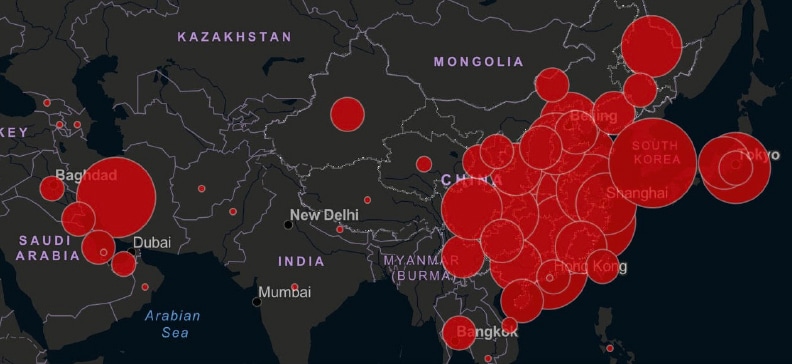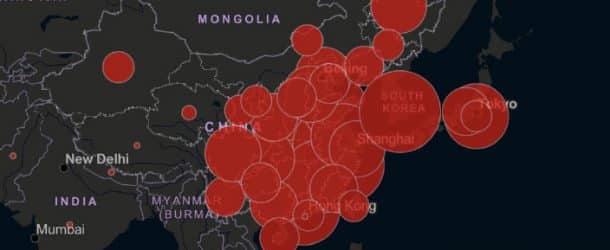How Does It Compare To The Flu?
By Michael Kurth
Four weeks ago I devoted my column in Lagniappe to the coronavirus (bestofswla.com/2020/02/20/how-dangerous-is-the-coronavirus). I said its symptoms were like a bad case of the flu, but added it is what we don’t know about the virus that makes it dangerous. For example, we don’t know how it spreads; we don’t know its incubation period (the time from contracting a virus until its symptoms appear); we don’t know if it is contagious during its incubation period; we don’t know its ability to mutate; we don’t know its mortality rate; and we don’t have a vaccine to prevent its spread.

I will write about the economic consequences of COVID-19 in the next issue of Lagniappe; things are too volatile to assess the impact now. In this column, I will focus what is known about the health effects of COVID-19 and how it differs from the common flu.
The “flu” is short for influenza. It is a contagious respiratory illness caused by viruses. The common symptoms of the flu are a fever, cough, sore throat, runny nose, muscle aches, headaches. Most people who get the flu will recover within a week. But some people, such as the elderly, young children, and people in poor health, are at high risk for serious complications, such as pneumonia or bronchitis. In tropical areas, the flu occurs throughout the year; in the Northern Hemisphere, the flu season typically starts in early fall, peaks in mid-February and ends in the late spring of the following year. The duration and severity of these flu epidemics vary, however, depending on the virus subtype involved.

The World Health Organization estimates that worldwide, annual influenza epidemics result in 3 to 5 million cases of severe illness and 250,000 to 500,000 deaths (a mortality rate of about 10 percent), although the severity of the outbreaks can vary significantly from year to year.
In the United States, individual cases of seasonal flu and flu-related deaths in adults are not reportable illnesses; consequently, mortality is estimated by using statistical models. As of Feb. 22, the Center for Disease Control estimates there have been at least 32 million flu illnesses, 310,000 hospitalizations and 18,000 deaths from flu. There is a mortality rate of .056 percent among reported cases and 5.6 percent among those who are hospitalized. The reason for the lower mortality rates in the U.S. is the widespread use of vaccines and earlier detections of the virus.

At last count, there were 88,000 confirmed cases of COVID-19 worldwide, with 3,000 reported deaths — a mortality rate of 3.5 percent. Approximately 80,000 of those cases are in China, where there have been 2,800 reported deaths with a mortality rate of 3.2 percent.
However, it is widely suspected that the number of cases in China is under-reported or has gone undetected. That would reduce the mortality rate.
Iran, on the other hand, has reported 34 deaths from just 280 cases, a mortality rate of 12 percent. But nobody believes their numbers. (A number of the reported deaths have been among high-ranking government officials.) Italy has reported 1,694 infected with 34 deaths, which is a mortality rate of 2 percent, while South Korea has reported 17 deaths out of 3,150 cases, a mortality rate of .5 percent. The bottom line is that COVID-19 appears to cause far more deaths than the run-of-the-mill flu, even if it is primarily old people like me who are dying. (Could this be a maniacal plot to solve our Social Security problem?)
If COVID-19 becomes a pandemic, as appears to be happening, closing our borders is like closing the barn door after the cows have run off. How can we stop the spread? Our government is not likely to lock down an entire city of 11 million people the way the Chinese government did in Wuhan. On top of that, we have a very mobile population; we love our cars; and we are accustomed to travelling frequently from place to place, which can rapidly spread a virus like COVID-19.
On the plus side, we have modern medical facilities and public services that many under-developed and developing countries lack, so early detection and treatment are possible. Individual precautions may be our greatest protection: most of us have cell phones, computers and access to the Internet that will allow many of us to work at home, order groceries without going to the store, and have food delivered to our door. We can also talk with family and friends without meeting them face-to-face. If the threat of deadly viruses and diseases confines us to our homes, well, we may have to start living like our teenagers live.
















Comments are closed.